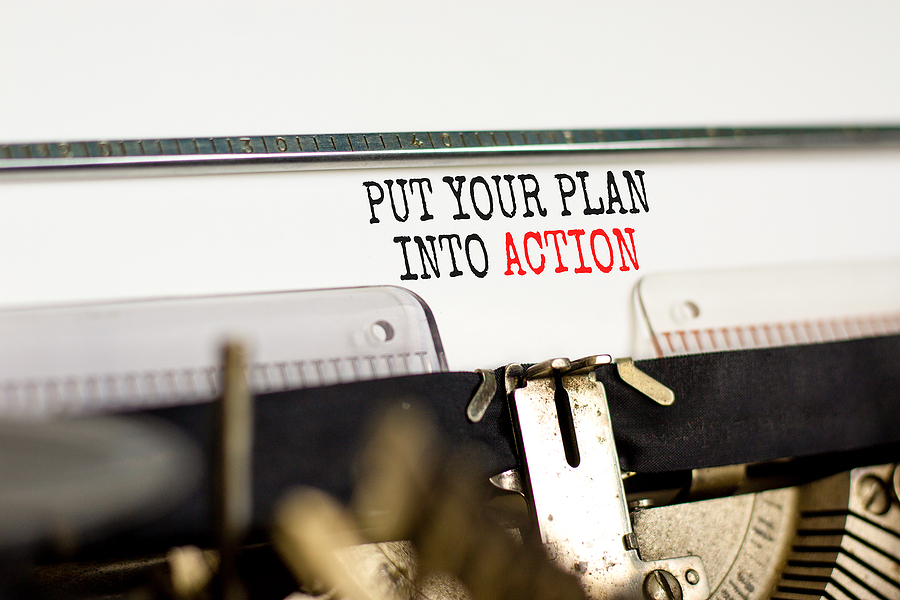
If you have a financial goal that you’re not making any progress toward, there’s probably something you’re missing: a plan. Without a plan in place, you might find yourself perpetually putting things like saving money and paying off debt for tomorrow. In the meantime, tomorrow can turn into months or even years.
But your financial future is too important to put on indefinite hold. Instead of letting time pass and hoping things work out on their own, you can create a simple financial plan that shows you how to reach your goals. Here’s what to do.
Clearly Define Your Goal
The first step forward is to define your goal in detail. While this suggestion may sound over-simplified, studies show that setting and tracking goals increases motivation and improves your chances of achieving what you want. So rather than making it a general goal that you can’t really track, make your goal SMART, which is an acronym for the following:
- Specific
- Measurable
- Achievable
- Relevant
- Time-based
For example, instead of just setting a goal to pay off debt, write down the specific accounts you want to pay off, balances owed, monthly or weekly amount you can afford to contribute to this goal and the target payoff date based on your contribution. So, if your budget has room for you to pay $300 a month toward your debt, your SMART goal might look like this:
Pay off the $7,000 balance on my credit card by January 2026, through automatic payments of $300 a month.
Having these details spelled out will give you a good vision for the action steps you need to take and help you see a realistic path forward.
Look over the numbers
If you feel like you can’t reach your goal soon enough, you may need to adjust some numbers. As much as creating or updating a budget can feel like a chore, you can use your goal as motivation to look it over.
Remember, a budget doesn’t have to be advanced math, it can simply be a comparison of your income to all of your expenses. If you don’t have enough money left over for your goal after covering expenses, look for ways to increase your income or cut costs, even if it’s just a temporary change while you’re working toward your goal.
You can also check to see if there’s help available. For example, you can talk to a certified credit counselor about going on a debt management plan or other debt payoff strategies, or try searching for first-time homebuyer assistance programs in your state or local area.
Try Reverse Engineering
Sometimes when you’re preparing goals, it can be helpful and motivating to look at examples of what others have done.
One of the most famous examples of achieving a big goal is the first moon landing. In 1962, President John F. Kennedy announced the U.S. would commit $25 billion to the goal of putting an astronaut on the moon by the end of the decade. At the time, however, no American had spent more than 15 minutes in space!
This was a lofty goal by all accounts, but it was also measurable and time-based. That meant everyone involved on the project could structure their work around a set end date and target dollar amount. Of course, as we now know, the mission was a success.
How does this approach look for you? It involves working backward from your goal. For example, if you want to buy a home, you can start by researching average sale prices in your area and calculating how much more cash you need to save for a 20% down payment, then you’ll calculate how much time it will take you to save up that amount based on your monthly savings deposit. So your goal might look like this:
Save $60,000 for a down payment on a home worth roughly $300,000 by January 2027,
through automatic deposits of $1,500 a month to a high-yield savings account.
When you start with the end result in mind, two things happen. First, you visualize your success, because you make the assumption your goal is completed. Second, you can identify the steps needed to reach the end goal.
Put Pen to Paper
To flesh out your financial plan, write down each financial goal you have and then break it into smaller steps.
There are many different ways you can map out your action steps, including by simply writing each one out on paper or using an excel spreadsheet. For a more advanced approach, try a goal-tracking app like CreditU, which lets you input your goals and financial information and then shows you a checklist of the specific action steps to take.
Here are a few examples of what your action steps might be:
| Pay off Credit Card Debt | Buy a home | |
| Step 1 | Review your budget to find expenses you can cut. | Schedule credit report review with a certified credit counselor. |
| Step 2 | Use a debt-payoff calculator to determine your payoff date based on your increased monthly payment. | Research down payment assistance programs. |
| Step 3 | Increase automatic monthly payment amount on your credit card. | Open a savings account to deposit down payment savings into. |
Revisit Your Plan
On the road toward your financial goals, there’s a good chance you’ll hit some bumps. When that happens, don’t give up. You may have to reassess your plan, adjust your budget or even change your timeline, but that doesn’t have to stop you from reaching your goal.
Just remember that financial goals aren’t a set-it-and-forget it kind of thing. Once you’ve laid out your goals, plan to review them and them on a monthly basis and update them when your finances shift, whether it’s for better or for worse. That way, you’ll keep making progress, despite any setbacks you face.